A History of the Fairly Recent Wild & Woolly West & its Unimaginable Future—
(which is already here)
NOTE: In order to fully understand the moral of this story, the reader also needs to understand how public lands in the West are managed. An explanation of the state land sections is also necessary and why, from time to time, the federal and state governments are willing to make land swaps. So before you get to the real heart of this story, i.e. the infamous Alex Joseph, his life in Big Water, the state land transfer, and the consequence of that trade, please take the time to wade through this primer on public lands. —JS
When the American West was settled, much of the arid southwest was deemed useless. it belonged to everybody and in many cases, it was because nobody wanted it. Today, many Americans believe that “public lands” were set aside specifically by the federal government for the multiple use and enjoyment of all Americans. In fact, most public land remaining in the West was once called the “land nobody wanted.” The Homestead Act of 1862 allowed for the eventual settlement and development of more than 270 million acres of public land, most of it west of the Mississippi River, to more than 1.6 million homesteaders.
But in the parched desert southwest, it was almost impossible to make a living on a piece of ground that small and dry. Subsequently, much of those lands–millions of acres— was deemed “public domain.” Trying to use that land became a bloody free-for-all.
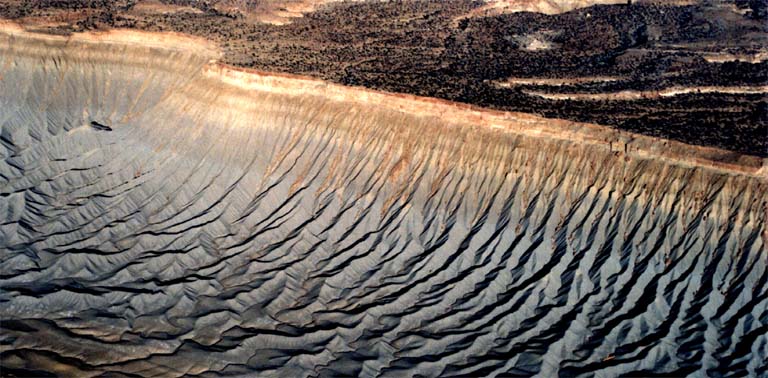
Desert lands in the Southwest had some value for cattle grazing, but it was marginal. Range wars ensued, unregulated lands were badly overgrazed and abused. The land was wide-open to whoever wielded the most power, and it wasn’t until 1934 that the Taylor Grazing Act implemented any kind of controls or regulations. Surprisingly, in southeast Utah, most local ranchers welcomed the new law. Previously, they had unsuccessfully competed against the big cattle companies that moved into the area from Colorado. The Taylor Act gave the locals a leg up.
The government also knew that certain natural resources had commercial value and the Mining Act of 1872 gave companies and individuals the right to file claims and develop resources on any public lands that showed potential.
Throughout most of the 20th Century, southeast Utah and much of the Rural West was simply left alone. Ranchers grazed their cattle, families eked out a living. Many were good stewards of the land; some were not. Time and the sheer sparsity of humans spared much but not all environmental impacts. Prospectors came and went. Mines, big and small, went boom and bust.
While a few made fortunes, most of the rural settlers did not. They may have come for riches but most stayed for other reasons. In Utah, of course, the far country was settled by Mormons. For many of them, they discovered that a remote and simple life suited them. They are the outliers, the people who shun the crowds and the frenzy of “modern society,” (no matter what century), who seek life and refuge out on the far edges of the world–in the places that nobody else ever wanted.
Post-World War II America changed everything. Americans moved West in stunning numbers. In 1946, President Truman created the Bureau of Land Management (BLM). Its mission was “to sustain the health, diversity, and productivity of the public lands for the use and enjoyment of present and future generations.”

Demand for natural resources exploded, especially with the advent of the Cold War and the uranium boom that followed. The economy of the United States experienced decades of unbridled, almost exponential growth. That growth created serious environmental impacts on those mostly unregulated public lands and in the 1960s and 1970s, the U.S. Congress took steps to protect them. The 1964 Wilderness Act identified lands “where the earth and its community of life are untrammeled by man, where man himself is a visitor who does not remain.
For decades, Western states and the federal government have been wrangling over the disposition of all those public lands, In Utah an agreement was reached between the federal government. Within each township in Utah, the federal government gave the state four sections, each of them a square mile. A state agency called the State Institutional Lands Administration (SITLA) was created to manage those lands. Its mandate was to generate revenue for the state’s education system , but because of the random distribution of those sections they often wound up in the middle of national parks or on federal lands that were inaccessible and economically worthless. Utah claimed that the landlocked nature of those state sections limited its ability to fund its schools.
The federal government was willing to make some trades. Often they swapped ‘land-locked’ sections within parks to Utah, in exchange for federal lands that might have potential for mineral or oil development. Or perhaps for cattle grazing. Until a couple decades ago, the state had never seriously considered SITLA lands for their tourist or “amenities” value. Who in their right mind would want to build a high-end residential development in the middle of the desert? But then, as we all know, the capitalists found a way to monetize beauty itself. Suddenly, SITLA lands presented an entirely new opportunity.
About twenty years ago, A Salt lake Tribune story caught my eye. Then-Governor Leavitt and then-Secretary of the Interior Bruce Babbitt had worked out a huge land swap. Utah acquired an enormous 44,000 acre parcel of federal land in southern Utah as part of the trade. The trade worried me. I warned then and many times since that these land swaps could forever change many isolated and beauttiful parts of the state. I think of the places that we always assumed would be safe from urban sprawl, and extravagant developments, places where the hermits and the crazies, the loners –the folks that “listened to the beat of a different drummer,” still had a place to retreat to.

The specific swap I’m referring to here was called “Big Water,” though the SITLA swap encompassed far more than the town. Big Water has never been much to look at. And the little town itself may be spared, simply because it’s so ugly–and I say that in a good way. I’m not sure developers could ever attract the kind of high end promoters they want, unless they buy out the entire community and flatten it.
But the Big Water trade encompassed 44,000 acres; by the beginning of this century SITLA was starting to see the economic potential to develop land for Industrial Tourism and the revenues that came with it. Twenty years ago, I predicted in a Zephyr story that “in the decades ahead, sitting on the edge of Escalante/Grand Staircase National Monument and just a stone’s throw from Lake Powell, it is bound to attract vast numbers of would-be buyers and land speculators.” But I could not have guessed the obscene opulence that lay in the future.
ALEX JOSEPH & GLEN CANYON CITY
I have a particular fondness and a personal appreciation for “outliers,” those humans who cannot abide by the “normal rules of society.” They (we?) were wired differently; something went haywire in our genomes. (Or maybe something right.) In any case, for those reasons, I was drawn to “Big Water.” Or at least the way it was. The first time I wandered into what barely passed for a town, it was called Glen Canyon City. It had originally been built to house construction workers at Glen Canyon Dam, just a few miles east. But once the dam was completed in 1963, the town served little purpose and was just a jumble of old shacks and disintegrating trailers. But it did sport one gas station.
I first heard Glen Canyon City mentioned in Ed Abbey’s 1975 novel, “The Monkey Wrench Gang.” The dialogue between Hayduke, Seldom Seen, and the gas station owner still makes me laugh out loud, every time I read it. In the 70s, there was talk of building a coal-fired power plant on the Kaiparowits Plateau. But opposition by environmentalists was fierce…

“Why them ignorant sonsabitches.
The gas pumper said, “Why we got more air around here’n a man can breathe…Looky up there. More air’n you can shake your pecker at.!”
Abbey noted that, “The Old man wore his green and white pinstripe official Texaco uniform. An original, it appeared to have last been washed during the heavy rains of August 1972.”
But in 1975, Glen Canyon City was the domain of the controversial polygamist and constant thorn in the butt of Kane County politicians— Alex Joseph. He and his cult had been booted from one federally owned section of land after another. But they finally found Glen City and nobody seemed to care. It was ready to fall down anyway. Here Alex would build his own kingdom. I had heard about Alex from a ranger friend at the dam. “If you’re headed for Kanab,” Popovich said, “stop at the Red Desert Cafe. The food’s good and you might get to meet some of Alex Joseph’s gorgeous wives.”
I was skeptical but I thought, what the hell. The next morning, I left Page and after the long incline from the lake, in the middle of nowhere, I spotted a collection of ramshackle houses and trailers, long abandoned cars and pickups, and a plethora of tumbleweed. You’d think they were raising it as a crop. The Red Desert Cafe didn’t look much better, but I was hungry and curious about those wives.
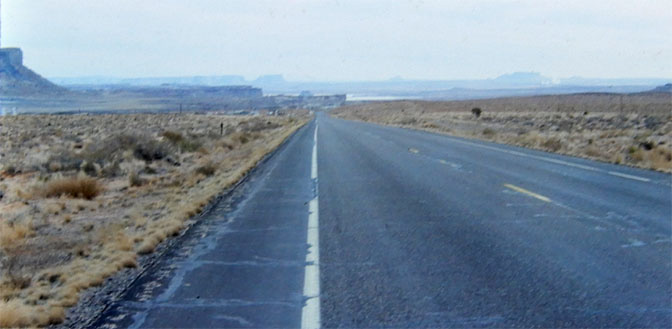
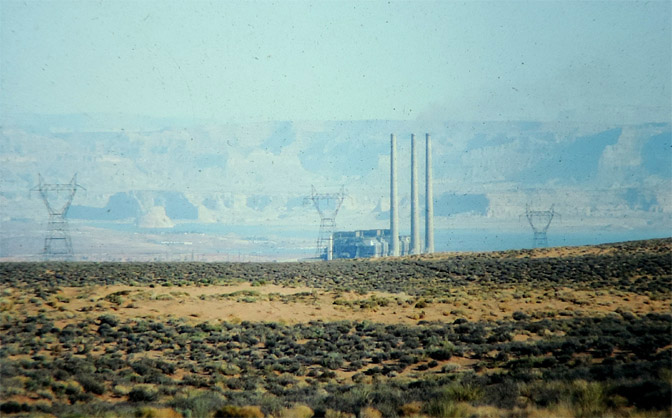
near Page, AZ 1975 (photo credit: Jim Stiles)
Sure enough, Popovich’s description was spot on. Alex was at the bar, looking a tad taciturn. Several of his wives were there too, some cooking and some working as waitresses. They were all over-qualified to be food servers. I learned that among Alex’s wives, one was a doctor, another was a lawyer. Another was a realtor…they were all quite lovely. Alex walked over and said hello. He had a beer gut and stringy black hair pulled back in pigtails and he needed a shave, and I thought: What does this guy have that I don’t have?
But he had something because the Joseph women seemed to almost swoon when they saw Alex. “You’d just have to get to know him like we do, to understand,” one of the women later explained after Alex stepped outside. Then she blushed and said, “Well maybe not like we know him.”
I shook my head sadly. I hadn’t had a date in months.

Alex and his sidekick came back in and we chatted for a few minutes. His buddy was the spitting image of Wild Bill Hickock, from the handlebar mustache to the fringed deerskin coat. Then I said my goodbyes to the wives and left for Kanab.
I didn’t know a soul in Kanab. But I stopped at a drug store to ask if there was anywhere in town I might be able to buy art supplies. The kid chuckled but recommended I visit a shop called the Art Mart. It was just off Main Street. “There’s a giant sign,” he said laughing. “You can’t miss it. They’re a little weird.”
Sure enough, long before I saw the shop, I saw the sign. I turned off Main and down a long gravel driveway, where I was greeted by its owners. They actually came out of the shop to say hello. As I climbed out of the bus with Muckluk, they shook my hand, “I’m Jack Lane,” he grinned, “and this is my better half, Molly. Welcome and come on in!” And they introduced their dog Chips to Muck; they became instant buddies.
It was such a wonderful introduction and we became longtime friends. In addition, I had spent the last month totally alone, except for Muckluk, at a very remote corner of the Grand Canyon’s North Rim. I never saw a soul. Other than my brief encounter with Alex and his wives, I had not heard a human voice in a very long time. And Alex wasn’t what you’d call chatty. On the other hand, conversation came easy for Jack and Molly.
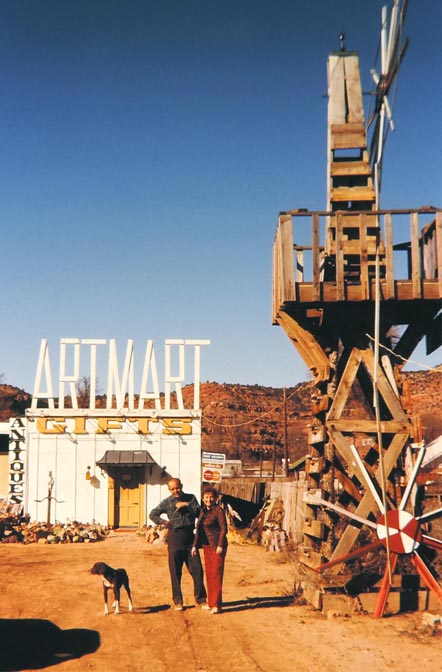
I soon learned that Jack and Molly were recent transplants from, of all places, New York City. Jack had been a commercial artist for decades but had retired in 1972. For reasons I never quite understood, they moved to Kanab, Utah and opened this small shop. It was a gallery of Jacks’ work and he was a master of everything. He painted, sculpted, and did metal art. His workshop was incredible. Their only difficulty had been their relationship with some of the local Mormons. Most were kind to them, but some of the townsfolk were a bit hostile. Or maybe bewildered is a better way to put it. WHY? Some wondered, why would two old New York Jews move to Kanab?
They had been approached by Mormon missionaries less than a week after their arrival. Molly was confused by the fact that most of them were very young but called themselves “elders.” Molly said, “If they’re elders, I must be the age of a dinosaur!” And she added, “Why should we be joining another church? Even the Mormons say we’re ‘the Chosen People.’ If we’re the chosen, then they can join us!” To some members of the LDS faith, Molly’s spunkiness and candor was unnerving.
Still they had many good LDS friends and when I mentioned I’d considered making Kanab my home, Molly immediately started making calls. She soon introduced me to a woman whose name I cannot remember but who later became mayor (I think). When I mentioned that I had worked with kids as a social worker and as director of the University Day Care Center in Kentucky, she asked me if I’d be interested in being a teacher’s aid at the local school. She had contacts and soon she’d given me some names to call.
A week later I found myself applying for a job as a teacher’s assistant at the Kane County High School. I had an interview with the principal Bob Leigh and LeVonn Sorensen, the superintendent of schools; I had even shaved off my beard and donned my only tie for the occasion. Despite my squeaky clean look, I sensed hostility. They asked me if I knew anyone in Kanab. I mentioned Jack and Molly which didn’t seem to impress them.
“And also,” I added, “Well…not here in Kanab,” I explained, “But I do know Alex Joseph.”
I don’t know what I was thinking. Maybe I had a death wish. Maybe I’d already sub-consciously determined that Kanab was not the place for me.
“Alex Jo–,” the principal caught himself. He stared at me for a moment, then he leaned back and smiled. “Old Alex…he’s getting noisy again out there at Glen City. LaVonne, when was the last time we had a little…chat with Alex?” He winked and grinned at me.
“Been a couple o’ years I’d say, Bob. Are you thinkin’ it’s time to pay the Josephs another visit?”
“I think that’s just what we need to do,” said Bob.
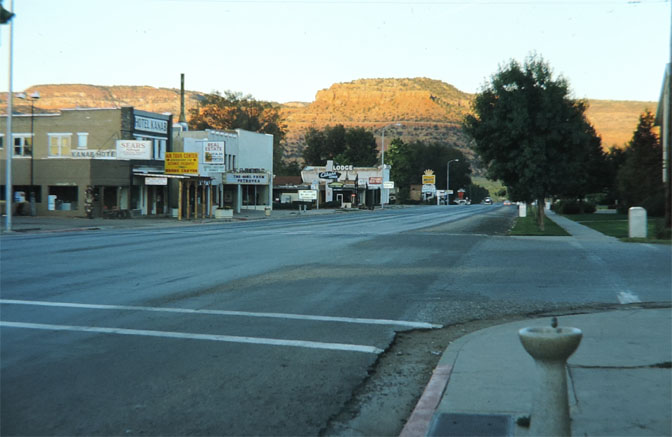
The conversation between them continued for a few minutes and they almost forgot I was there. Finally, I was offered a part-time job. Eight hours a week at minimum wage. I shaved off my beard for this? I thought. I declined their kind offer and left immediately for Moab. On the drive back, I stopped again at the Red Desert Cafe, this time to warn the Josephs of the veiled threats. One of the wives ran and found Alex and a moment later I was telling my “Bob and LaVonne” story to Alex and Wild Bill.
Alex rolled his eyes and chuckled. “Yeah…those pencil necks don’t care too much for me. They say I’m violating sacred laws, but I’d bet both of those sombitches has a polyg in their family histories. Damn phonies if you ask me.”
Wild Bill nodded. So did the wives.
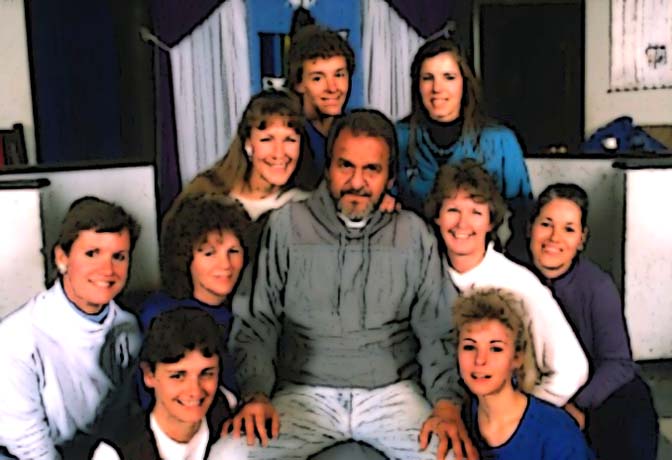
Then Alex stood up from his bar stool and looked right at me. “If you go back there you can tell ‘em we’d be thrilled to see them and give them a greeting they’ll never forget. I’d love to see ‘em…If those fellers come snooping around here, I don’t reckon they’ll be a problem.” Alex gave me a hard stare then started laughing. He pulled back his jacket and revealed what looked to be a Colt .45 revolver, stuffed in his belt. “I always preferred the Colt to the S&W,” he explained.
His sidekick, Wild Bill, smiled broadly. He opened both sides of his fringe coat and said, “That goes double for me.” A Colt .45 on both hips. I was impressed.
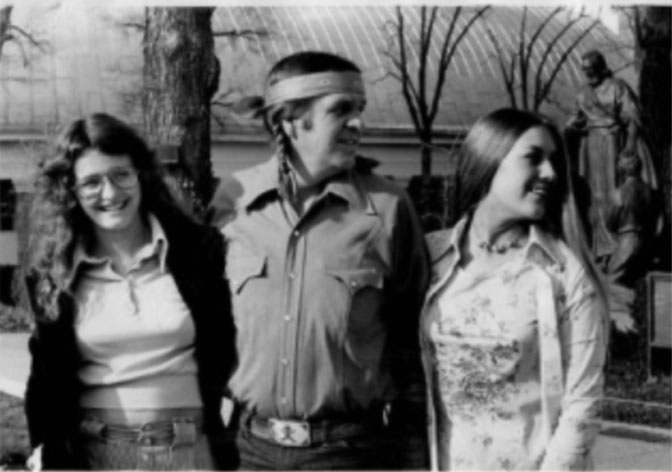
they were visiting Temple Square in Salt Lake City, Utah
(photo credit: mormonhair.tumblr.com)
I left town and never saw Alex again. Already, in 1975, “modern society” was looking dimly at the outliers in our world. Whatever else one might say about Alex Joseph, he was the quintessential outlier…and an outlaw outlier to boot. For all his faults, and his very questionable practice of polygamy. I couldn’t help but admire the guy in some perverse way. Alex didn’t give a damn what people thought of him. He wanted to live his life HIS way. For better or worse.
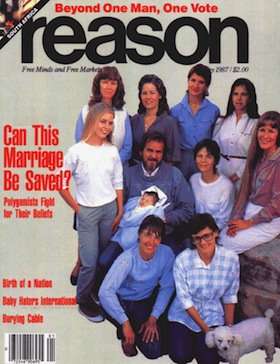
I didn’t get back to Kanab for a few years. I stopped at the cafe in Glen City but it had an abandoned look. But I kept hearing about Alex. He seemed to titillate the media on a regular basis. He spent much of his life dabbling and toying with religions of all sorts. He had converted to the Greek Orthodox Church as a kid, then turned to the LDS Church. But that didn’t suit him either, so he created his own brand of Mormonism, calling it the “Confederate Nations of Israel.” He was particularly fond of the plural marriage aspects of the LDS Church (at least as it had existed almost a century before). He was constantly at war with the government, at all levels. He was no fonder of the Kane County Commissioners than he was the President of the United States.
Joseph continued to promote polygamy and his style of religion, and pushed to incorporate Glen Canyon City. In 1983, with the new name “Big Water,” Joseph got his wish and became its first mayor. Three years later, he announced his departure from the Republican party and became a libertarian, So did the entire city council. According to Wikipedia, it became the first all libertarian municipal government in America.
Years later I mentioned Alex Joseph in an old Zephyr paper edition. I received this letter from a fellow named Bill Helm. He told me this story:
“I knew Alex Fairly well. I asked him one time how he ended up with so many beautiful wives, he said some weekend we will get in his plane and fly up north and get you a couple. I said naw, I had enough trouble with one. I stopped in at the restaurant one time, I was hauling coal from Salina Utah to Page. There was a kid there that I knew who came over and was setting next me in a booth. His name was Brian, and was part of Alex’s clan.
“A guy came in and sat at the counter, turned and saw Brian. He pulled out a .44 Magnum pistol, pointed it at Brian, and let’s just say he had some words with Brian, I don’t remember what was said because I don’t care what anybody is saying when a .44 Magnum is aimed in my direction. After the confrontation was over I finished eating, got up and went outside. I found Alex and told him what happened. I never saw Alex after that I don’t think. But later I heard that Alex found the guy ( if you know anything about Alex he was a Black belt in Karate or something) he threw the guy on the ground, brought up the incident involving me and he put the guy’s .44 in his mouth and said if he ever saw him packing a gun again he would kill him with it and bury him out in the desert. That’s the way Alex took care of things… as only Alex could. Yeah…I have a few good memories of Alex Joseph.”
By 1994, Alex’s health began to fail and he stepped down as mayor after three terms. He had lived one hell of a life–a marine, a mail man, a cop, fireman. He was even the star of a movie called “Alex Joseph & His Wives,” in which he played himself. (Who else could have filled the role?) As he neared death, he asked that on his death certificate, the authorities list his occupation as “pirate.” I hope he got his last wish.
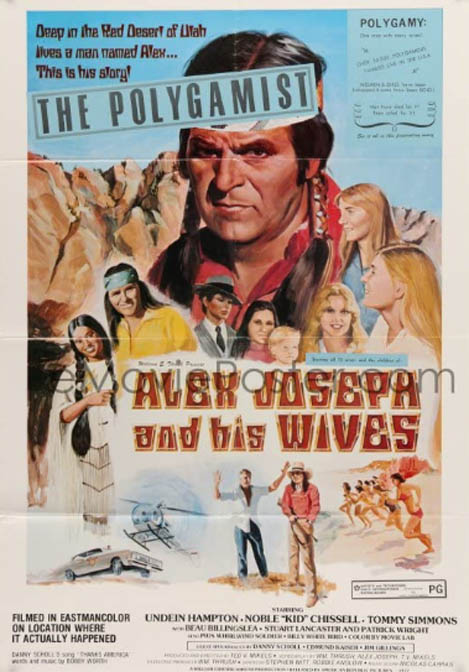
Alex Joeph died on September 27, 1998 at the age of 62 from liver cancer. When he left this world, Alex claimed he had been married to as many as twenty women, but officially, “he was survived by seven wives and 14 biological children. (Wikipedia)
(NOTE: The very best story about Alex was written in 1975 by Sara Davidson, “The Man with Ten Wives.“)
SITLA COMES TO BIG WATER…& ‘AMANGIRI…&...
Everything changed after his death. Even a self-proclaimed prophet like Alex could not have seen what was coming. After Alex passed, polygamy disappeared (and with few objections, probably for the better). As one can imagine, in many cases the practice created serious psychological issues, especially for the younger wives. The town changed completely, other than its perpetually rundown appearance. And to show just how much Big Water changed in a very short time, the little town elected its first gay mayor. He was recently re-elected.
Big Water now has its own website, has created an arm’s length list of zoning laws and recently passed an ordinance that prohibits the construction of any new home smaller than 2000 square feet. (I think Alex would be reaching for his .44 about now).
And so, from the “outlier” point of view, Big Water went to Hell when Alex died and SITLA made its land swap. Though still small by comparison. Big Water has grown from 180 citizens when I first arrived, to more than 500 now. That doesn’t include the many “ranchettes” that have appeared in the vicinity in the last decade or two, as the tourist/amenities economy explodes all over the West. But beyond those changes. there was so much more to come…
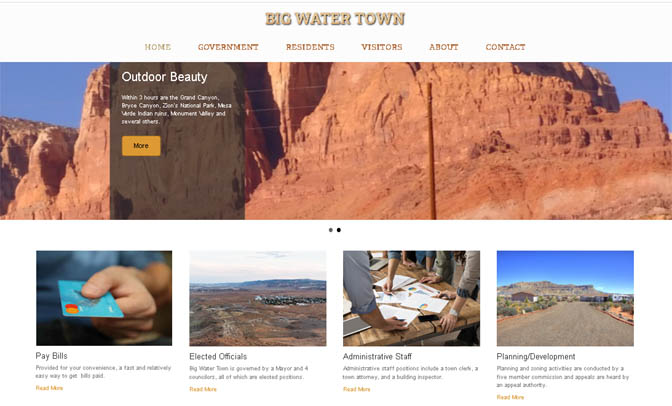
The Future sort of creeps up on us. Especially the Industrial Tourist economy. Most Moabites thought I was insane when I said our little poverty pocket would someday be overrun by tourists and an “amenities economy” that would cater to the mega-wealthy and push its original pioneer families into the shadows, rendering them powerless to fight back. Two decades later, look at Moab now. These changes don’t happen overnight.
When the vanguard of what’s coming to the Big Water area first arrived, hardly anyone noticed. Nor did many pay attention to the SITLA land swap. Big Water Town is not the real threat; it’s what lies just over the hill and a few miles east. The change started a decade ago and its name is Amangiri. Here is how it describes itself:
“Amangiri blends into untouched red-rock country, over 900 acres of the vast and majestic Colorado Plateau, the original Wild West. In this desert landscape of canyons, mesas, ridges and gorges, the modernist Suites of Amangiri and the tented Pavilions of Camp Sarika offer an inspiring welcome to one of the world’s most dramatic secluded settings. The suites, villas and tented pavilions are just a stone’s throw away from the stunning wilderness of Bryce Canyon and Zion National Park.”
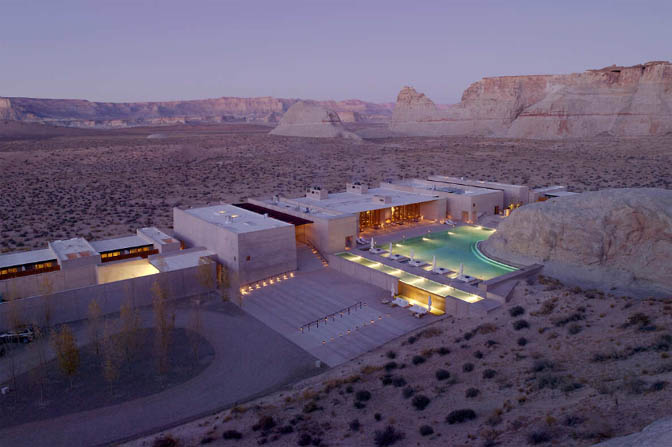
The luxury destination started construction in 2009, but because of its isolated location—it’s a few miles south of Big water on the west side of Hwy 89 — few really noticed what was happening in that remote canyon. And one has to ask…who came up with this monstrosity (to some….an extravagant miracle to others). I had to do a little internet digging to find its history. But it doesn’t take much digging….Amangiri has its own Wikipedia page. Its parent operation has its Wiki page too. And so does the man who created the whole wretched opulent concept. Much of what follows are direct quotes from various internet sources and in this case, Wikipedia is spot on.
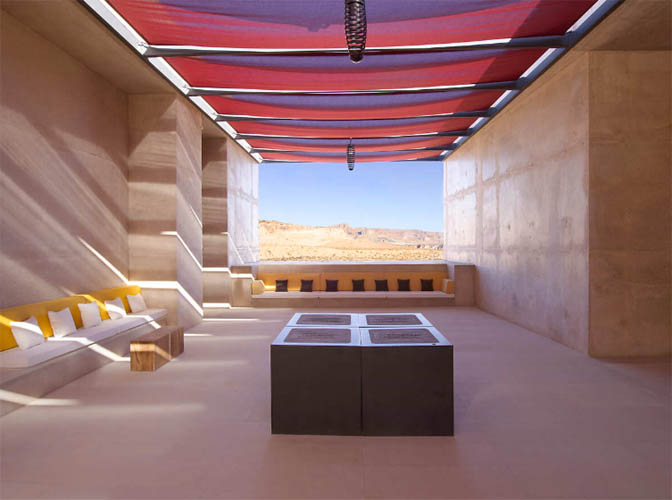
Amangiri itself calls itself a “Hotel” but there must be a more descriptive word than that which is still printable for sensitive readers! The resort sits on a 600-acre piece of desert which, as mentioned, was acquired via the 44,000 land swap with the U.S. Bureau of Land Management . Among its architects were, Marwan Al Sayed and Mies Anderson, the owners of Masastudio in Los Angeles. On their website, here is the way they describe their work:
“MASASTUDIO (established in 1997) is a Los Angeles based architecture and interior design studio engaged exclusively in projects of the highest caliber. Founded by principals Marwan Al Sayed and Mies Anderson, the firm produces highly detailed work for an exceptional clientele seeking to create unique environments. Their work encompasses luxury resorts and spas, distinctive residential, cultural heritage projects and museums, MASASTUDIO has developed a global reputation for work that is timeless, sophisticated, and uniquely of its place.
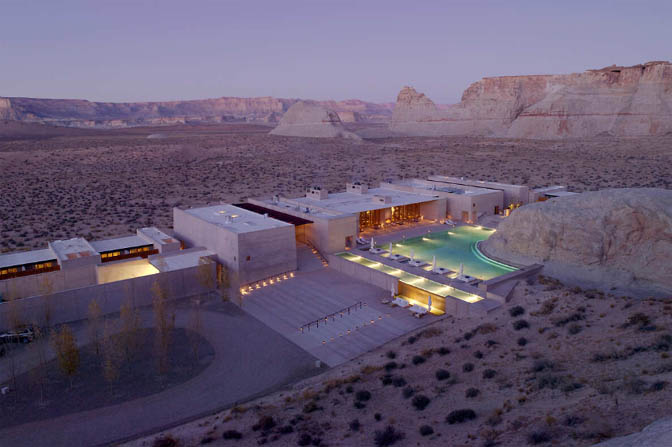
“The studio approaches every project from an art based conceptualized point of view and believes in the power of this ethic. With a design language that reinterprets the ancient and archaic, an intimacy towards the human body and an aim to merge primordial use of light, orientation toward views, materials and sound, to create a sensual and emotive architecture and interior.”
My house is what one might call “minimalist,” but I don’t think it’s what Marawan Al Sayed had in mind. According to Wikipedia, Amangiri opened with “34 suites. It became known for its Instagram-friendliness, and as a favored destination for many celebrities.” (Apparently the Kardashians LOVE it)
Five years later, Amangiri added 36 private houses, called “The Mesa.” The homes sold for between $7.5 million and $15 million. And then, not nearly satisfied enough, in 2020, Amangiri expanded again, adding Camp Sarika, “10 tented pavilions” that can accommodate 30 more guests.
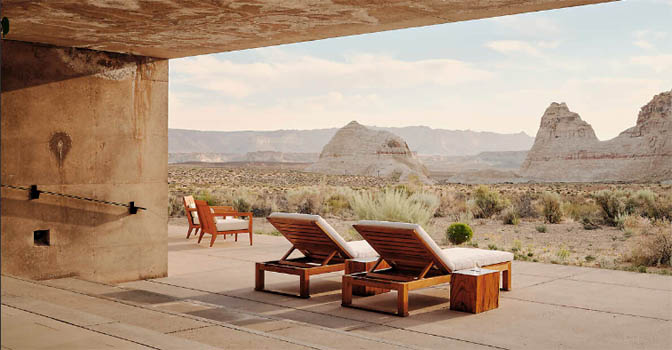
And if you get hungry, you won’t have to drive to Page for a Big Mac. Amangiri built a massive dining room that can accommodate 79 guests. It specializes, of course. In Native American–inspired cuisine. And if you need to unwind and relax after your meal, Amangiri offers a 25,000-square-foot spa.
And finally the cost for all this? According to numerous online travel sites, rooms start at $3500,,,PER NIGHT. I did spot one “deal” that had a $3100/night price. But if you can afford 3500 bucks anyway, who’s going to quibble over $400 anyway?
SO…TO PUT IT MILDLY…’WTF?’ HOW DID THIS HAPPEN?
How did we get here? Or anywhere? This is happening all over the planet and all over the West, especially as it relates to the trade out of these state sections to the federal government. As always it’s about money from private interests and the states.
Conservatives always adhere to the idea that private investment and the profit motive are at the heart of our capitalist system. Liberal supporters of the swaps support them and even push for them because they think it’s the best way to eliminate other resource uses on public lands like grazing and mining. Proponents of these trades, left or right, will always sanctimoniously say, “It’s about the children! About their education. How can you be against THAT?”
My reply is always, ‘What’s the point of a good education if you have an ugly, greedy, materialistic land upon which to utilize your ‘education?”
Even more puzzling…who ARE these investors with so much money to burn? I don’t always trust Wikipedia but the trail that leads to Kane County and Amangiri is pretty cut and dried. Here’s how it all began….
Amangiri Resort is owned by Aman Resorts, which was founded in 1988 by celebrated hotelier Adrian Zecha. But it didn’t start that way. Originally, Zecha just wanted to build an extravagant home for himself on the island of Phuket in Thailand. He couldn’t get bank funding so he and a few other wealthy investors bypassed the banks and started building five star hotels of their own. Their plans were wildly successful and more of their hotels continue to rise around the world for the rich and famous. But just who is Adrian Zecha. For once let me just offer a long paragraph from Wikipedia on the history and family of Mr. Zecha:
“Zecha was born in Sukabumi, Indonesia into the Lauw-Sim-Zecha family, part of the Cabang Atas or Chinese gentry of colonial Indonesia.] His family is of Peranakan Chinese and Bohemian roots. He is a great-grandson of the late nineteenth-century magnate and mandarin Lauw Tek Lok, the first Luitenant der Chinezen of Bekasi (a high-ranking post in the civil bureaucracy) by the latter’s controversial interracial marriage to Louisa Zecha, an Indo plantation owner of Bohemian descent.[ On being widowed, Louisa Zecha went on to marry another Chinese magnate, Sim Keng Koen, the first Kapitein der Chinezen of Sukabumi, where her great-grandson Adrian Lauw Zecha was born.
“Zecha’s father, the plantation owner Aristide William Lauw-Zecha, was the first native-born Indonesian to graduate from any American university, Iowa University, in 1923. The connection with America continued with Zecha and his four brothers, who were all educated in the United States. Zecha is also a cousin of the Malaysian royal, Che Engku Chesterina (née Sim-Zecha)” (Wikipedia)
Zecha expanded his hotel dynasty in the 1970s “when a friend asked him to help the Marriott Hotel chain broker land some deals in Asia. This experience led to Zecha, in 1972, to found Regent International Hotels, which was one of Asia’s first luxury hotel groups. And he never slowed down.
Today Zecha’s Amangiri is just one part of Aman Resorts. Aman in turn is the “trading entity” (whatever the hell that means) of Aman Group Sarl, “a Swiss-headquartered multinational hospitality company. Though the hotel empire was founded by Zecha in 1988, and operates 34 properties in 20 countries.” Vladislav Doronin, a Russian developer and art collector is now the supposed owner and chairman of Aman Resorts.( Read the Wikipedia links to follow the internal fight over the chairmanship between Zecha and Doronin—I’m still not sure who “won.”)

Doronin is also the owner of OKO Group, “a real estate firm that develops real estate projects in Miami and New York. In 1991 Doronin co-founded the Capital Group, a Russian development company. According to Wikipedia “Its area of activity is the integrated development of real estate projects. Capital Group took the first place in the Forbes rating of elite housing developers in Russia.”
AND FINALLY…WHAT WOULD ALEX THINK?
If you go to Google Maps and look at the aerials of Amangiri and Big Water, it still looks pretty empty out there. Even desolate. For purely economic reasons, these recreational oligarchs will make sure there’s still plenty of scenery to gaze at. At $3500 a night, they damn well better. But in the next twenty years, barring world economic collapse, a pandemic 100 times more virulent that Covid, or a really big asteroid, the American Southwest is going to bear little resemblance to the way we know it now. And especially the way we knew it…then.
The Zephyr was only a year old when I wrote a short essay called “New West Blues.” In 1990, everybody thought I’d lost my mind, Spanish Valley was still mostly open, dotted with trailers and double-wides, in various states of decay. Junk cars and abandoned washing machines were as much a part of the Spanish Valley landscape as a juniper tree or the prolific sagebrush. After all, the valley’s original name was “Poverty Flats.”
There is a website called “Historic Aerials” that allows the viewer to examine aerial photographs all over America. In Moab, I think the pictures go back to the 1930s. But you only need to go 25 years to see the beginnings of the massive changes. What happened in Moab will soon be coming to San Juan County—Bluff is already unaffordable to middle income families.
The idea of buying a “starter home” is becoming an antiquated and quaint reference to a time gone by. I was in my 20s and could even grow a beard when I met Alex Joseph on that empty stretch of US 89 between Page and Kanab. It still felt like the West too. I still have my beard though the last year has turned it white. But that’s how fast the world can change. Sometimes today’s New Westerners don’t’ really get it. They don’t understand what the West felt like. A few years ago I was remembering the lyrics to a Utah Phillips song, “The Telling Takes Me Home.” Part of it went like this…
“I’ll sing about an emptiness the East has never known,
Where coyotes don’t pay taxes and a man can live alone.
And you’ve got to walk forever just to find a telephone.
It’s sad, but the tellin’ takes me home.”
A few years ago, I wrote a short piece about social media and how it’s changing the West and the world. Amangiri and others like it are a consequence. Here’s just a piece of it….
“The West was and is and should always be about silence and space. Lots of it. About endless landscapes that stretch to infinity, and skies so vast and unbroken that they defy description, and moments of such incredible beauty and clarity that you think you’ll burst if you don’t share this extraordinary moment with someone right now.
“And what makes the West so special is that you can’t.
“The West has always been about remoteness and unimagined quiet and sometimes it made us crazy trying to decide if we loved it for its solitude or loathed it for its isolation. We really did have to walk forever to find a telephone. No one can truly know the West and love the West without also hating it. But it was the West’s unforgiving nature that also made us feel stronger. We chose to live here with all its emptiness and hardship and unforgiving space. Somehow being able to survive the West, on its terms, gave us a leg up on the world.
“Still the West overwhelmed us and filled us with unbridled joy and crushing loneliness, all at once. Like a bear hug from the Universe, we’d stand on the summit of a favorite peak or stretch out on our backs in the middle of a desert valley and for a moment we’d almost be giddy. This, we said, is pure unadulterated joy!
“And then the silence would sweep over us and we’d search for some sign that we aren’t as insignificant as we feel, and we couldn’t. We’d look around and think— it’s so…big. And suddenly our laughter would sound like the hollow giggles of a mad man let loose in a coliseum and we’d start to cry. Because this is as good and as bad as it gets.
“And we feel so alone and we want to tell someone. We want to hear a voice. But we can’t. Because this is The West—the big, hard, breathtaking, heartbreaking, unrelenting, unforgiving American West. Or at least, it was…
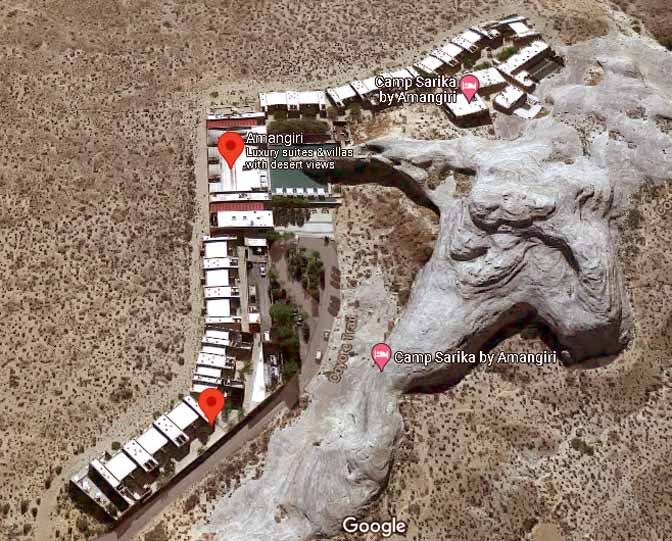
I don’t think Amangiri or what’s coming next will ever be able to capture that feeling again. For all of Alex Joseph’s faults, and I’m sure he’d list them if he were here, he would at least understand what the Outlier West was supposed to be. It’s probably just as well that Alex passed away before he ever saw any of this. Because I fear he’d stroll up to the Russian oligarch, or the American private equity guru, or the Indonesian Hotelier, or the Swiss multi-billionaire who wants to reshape the West as he’d like it to be, and give them a few words to ponder.
He’d give those fellas the ol’ Alex Joseph stink-eye and he’d tell them “to go where the sun don’t shine.” The Rich Boys would know they had Alex’s blood up. He had that look. He’d pull back his coat to reveal what hung from his belt and say, “You boys don’t scare me at all.” His old partner standing beside him, in the fringe coat, just might pull back both sides of his leather jacket and grin and say, “That goes double for me.”
And it would be at that moment, before either of these outlier outlaws could clear their ancient revolvers from their leather holsters, that the oligarchs’ “security teams”—those shark-eyed guys in the black suits with the wrap-around sunglasses and audio earpieces —- would open up with their AR-15s and AK-47s.
You know what they say…”You just can’t stop progress.”
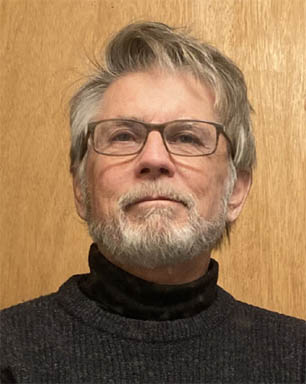
Jim Stiles is the founding publisher and editor of The Zephyr (“Clinging Hopelessly to the Past since 1989”). He spent most of his “adult life,” (whatever that means) in Moab & San Juan County, Utah. He now lives with two cats named Rambo & Rascal, in a tiny farm and ranch community on the Great Plains —- where there are no tourists.
He can be reached at: cczephyr@gmail.com
TO COMMENT ON THIS STORY, PLEASE SCROLL TO THE BOTTOM OF THIS PAGE


Why they can’t just leave the site alone is beyond me, but that’s what Facebook likes to do.
ALSO NOTE: I post old photographs and stories from our 25 year old archives every day. Pictures from Herb Ringer, Edna Fridley, Charles Kreischer.. even a few old photos from my Dad. So if you want to stay caught up on our amazing historic photo collections,
be sure to “follow” us on Facebook…Thanks…Jim
https://www.facebook.com/FansoftheCanyonCountryZephyr/
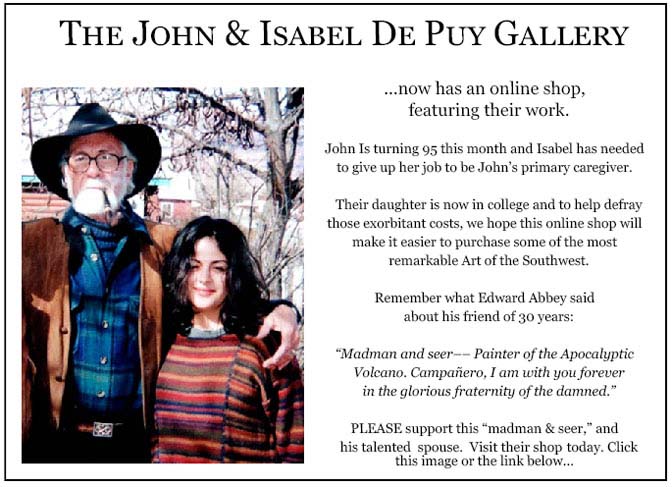
Thanks to them, our bills were almost completely covered.
Now I’d like to return the favor. Check out the link below and their online shop… JS
https://www.depuygallery.com/shop.html
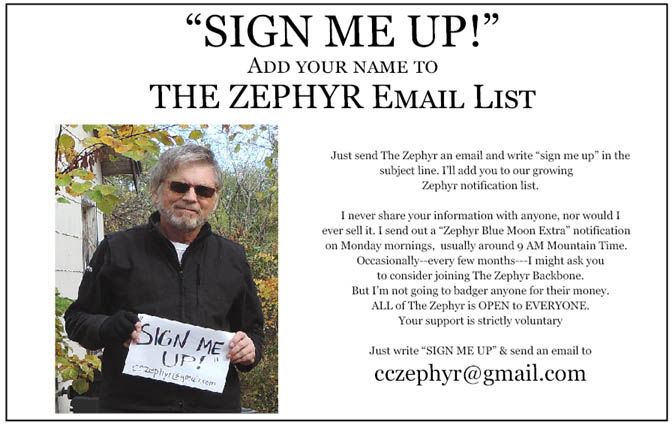

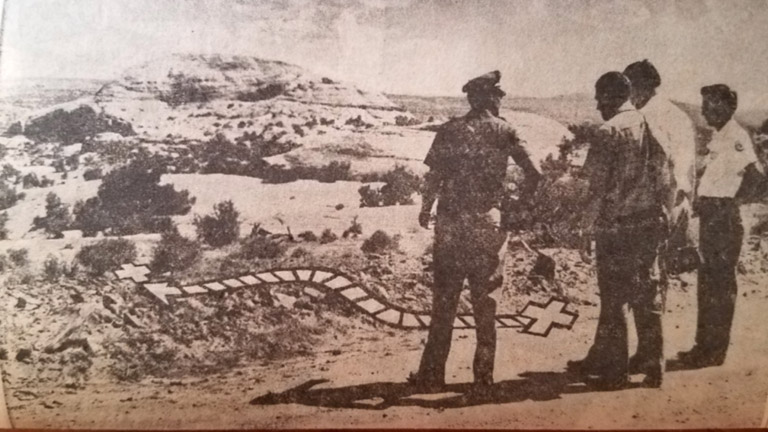
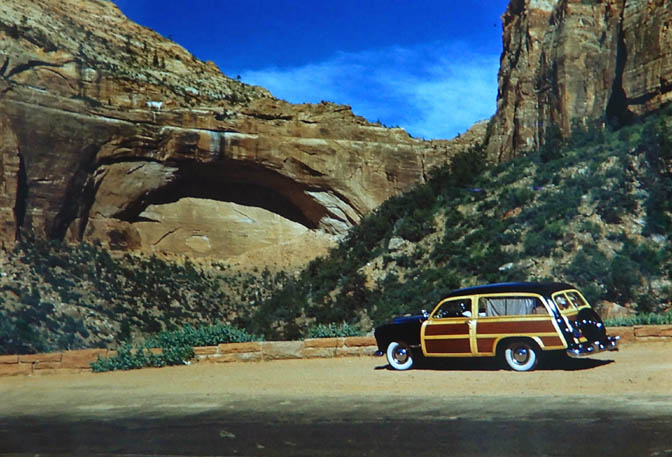
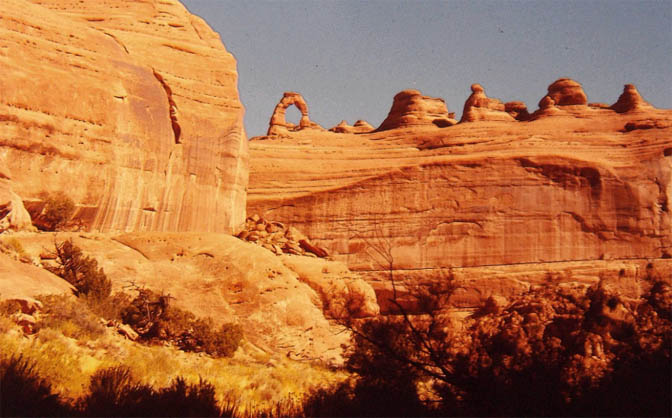
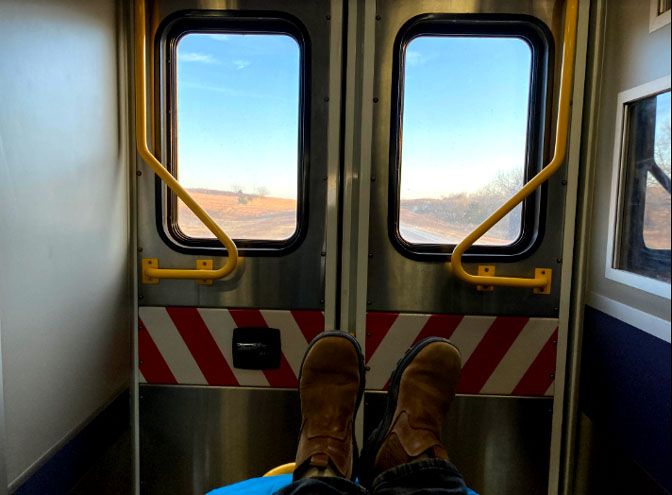
(My Recent Encounter with the Mental Health Industry) ZX#20 https://www.canyoncountryzephyr.com/2022/08/07/grief-meets-orwell-the-cuckoos-nest-by-jim-stiles-my-recent-encounter-with-the-mental-health-industry-zx20/
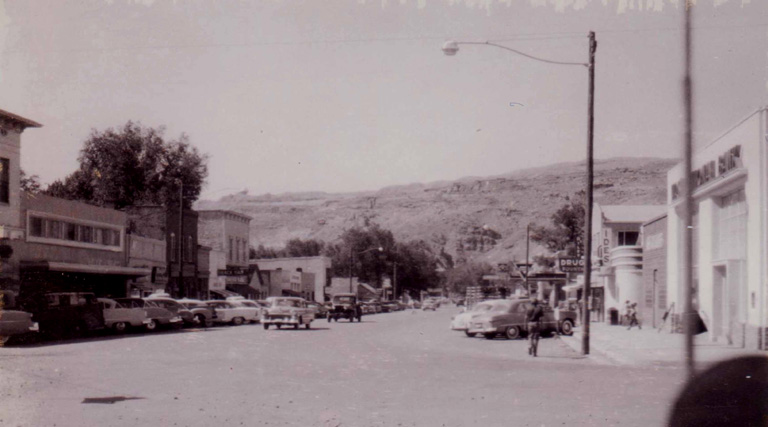
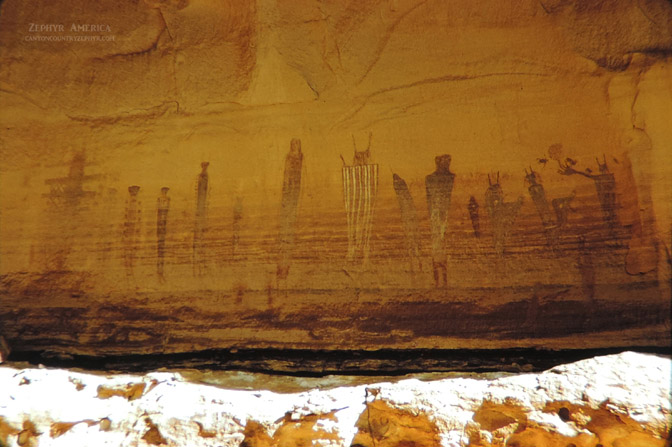
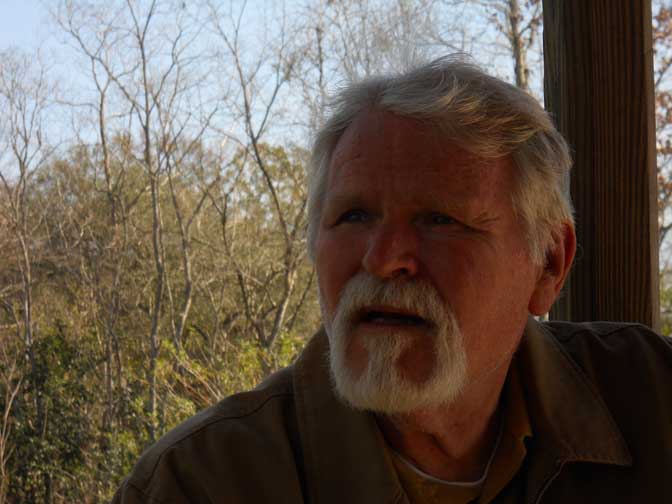
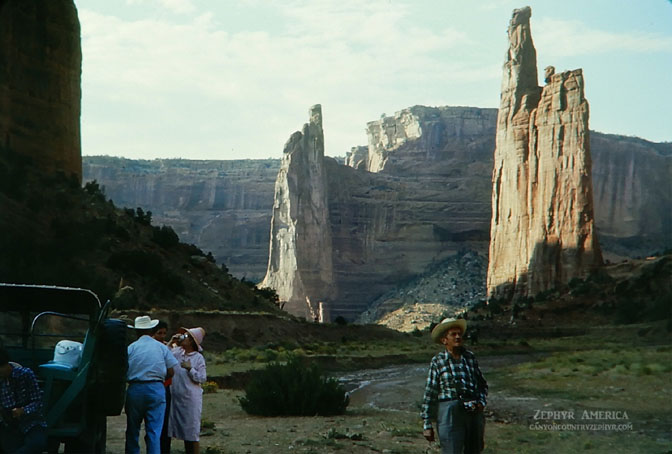




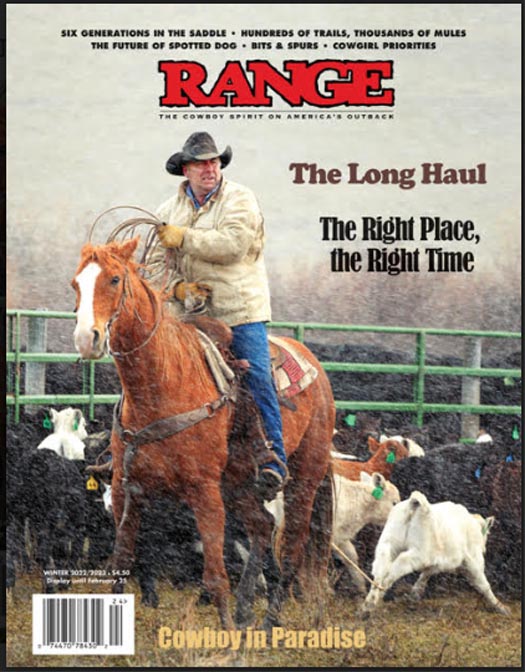


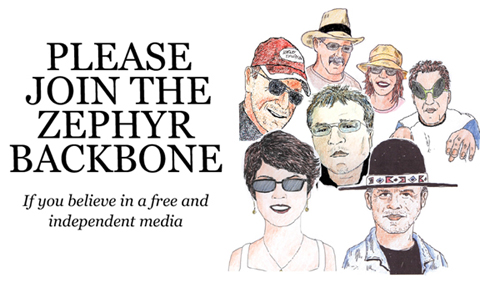

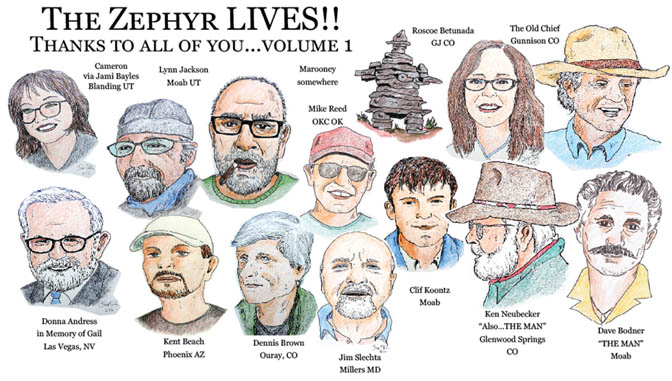
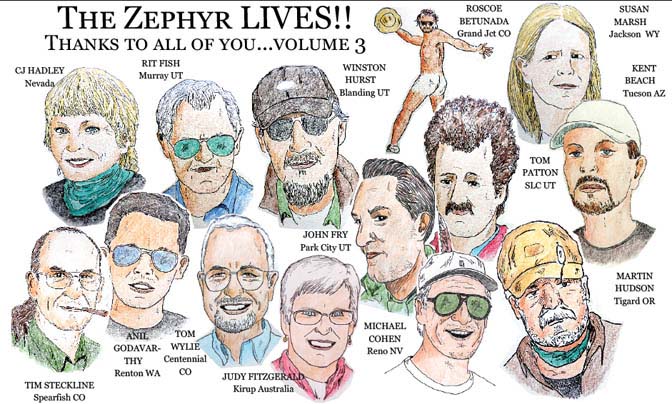
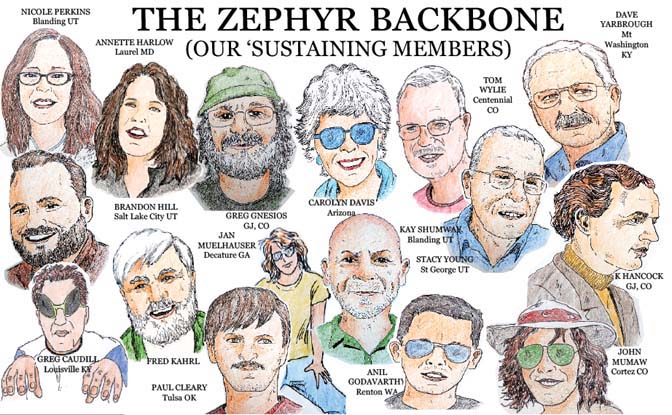
Loved the story about Alex Joseph.. I want to read more. thanks
I have driven past Joseph City but never stopped. I enjoyed your writing about that city and the area. You have a unique way of drawing the reader into history lessons which also show the future.
I’m only halfway through this one and need to pause for thought, stiles …
Blimey, one wife is an earful. What would possess someone to have twenty of them?
Industrial tourism and foreign investors are a cancer infecting Texas too. In 1998 I went with my mother on a bus tour to Big Bend. Lalitas was a tiny peaceful town with a small motel where we stayed. It is now a huge golf resort with a private airport for wealthy tourists who land with private planes. Our government and politicians allow this destruction and profits from it. It is a sad situation. Thanks for this amazing article and for the wonderful work you are doing to make the public aware.
great article. I have loved and feared the Utah vast deserts since I came here in 73. I self proclaimed as a desert rat even though I lived in Utah valley. I never go there now, to the desert. It is too crowded. I never go up the canyons anymore. Too crowded. I am moving back to Ohio where things are pretty stagnant as far as growth. Better that and affordable living than the crowded masses in some of the most beautiful and inhospitable terrain in the country. I remember the brouhaha of Alex Jones. Always a topic for the locals to clutch their faux pearls.
Alex certainly left his mark! All his wives look very attractive. He must’ve had a magnetic personality,, and other attributes! Imagine 3 college dorm mates succumbing to his magnetism!! My husband Gail had a road job in that vicinity and I had occasion to visit him. Two story homes with multiple doors. Lots of bonnets and long dresses. Many, many children. To my amazement everyone looked happy!
Las Vegas is a prime example of the population growth and shift . Altho Lake Mead has a HUGE bathtub ring where is has gone down, LV is asking BLM for more property because “there’s a shortage of cheaper home” and we’re running out of vacant land—-not to mention WATER!!
My in-laws lived just over the Utah line on US 89 so they had a post office box in Big Water. My father-in-law loved to go up there to get the latest Kane County gossip according to Alex. It was always entertaining.
I haven’t been there in 30 years. What a shame that country has been taken over by the ultra-rich. Great story, Jim. I always learn a lot of history in your pieces.
One way or another, the West is controlled by billionaires, either directly by land purchases by Indonesian developers and Russian oligarchs, or indirectly by activist politics directed by Swiss corporatists or Hungarian psychopaths. But unlike you, Jim, I believe everything has its tipping point. The amenities economy is many ways is unsustainable because it has no middle ground–middle class working people–to prop it up. There are the super wealthy patrons served by the nearly impoverished service workers who work for $20 and hour and require housing provided by their corporate masters. No society has survived without a vibrant middle class. More than economic pressures, however, are the natural pressures that since the dawn of time have controlled growth in the West; water, drought, wind and sun all constrain unfettered growth in these desert environs. Until every building has a miniature nuclear reactor that can produce unlimited off-grid power, and a self-contained rain making machine of some sort, such development will be limited to what nature deigns to give.
The whole world, including the whole USA is controlled by the rich elitists from all over the planet. It’s a shame
Another great story that reminds me of how things used to be in a land to which I was (and remain) addicted. Maybe it’s time (when the restaurants all serve 40-dollar plates of rice and beans) to simply eat the rich themselves.
This made me chuckle. Unfortunately, as a vegetarian, I’ll have to stick with the overpriced rice and beans.
is/was Chips a “dig” or, perhaps, a “dog”? anyhoo, reading this masterfull frequently-deviating-from-the-central-idea essay qualifies, at least for this slow reader, as my having read a short novel. okay then, a long short-story. enjoid the heck outta it Jim. thanx ~
Okay wise guy…another downside to divorce. I lost my brilliant content editor. But YES Rosco, “Chips” was indeed a dOg, and I just fixed the typo…Seriously, thanks. Any time you catch something like that, let me know. I’d rather be thought a bad editor for just a couple days than forever. Imagine the print days, when the mistakes festered on the paper for two months. Someday I will tell the story of the biggest editorial blunder I came THIS close to making.. and caught it less than 12 hours before we went to press.
Great piece! I wrote that story in Reason magazine about Alex and family 40 years ago. I’ve been living beneath the south face of the Kapairowits for 29 years at Church Wells, the other renegade construction camp from dam building days. I handled the Big Water response to the Grand Starcase management plan and the land exchange. We got 10 sq. miles taken out of the trade and placed in GSENM. Some of the monument policy decisions and the land exchange don’t add up to what you see actually going on here until you realize that the “invisible hand,” the unseen mover in all of this, is the Department of Defense and the military industrialists. No one at BLM knows more than they need to know to get things right on the ground. Clinton had to know enough to do the deal, and Babbit negotiated the land deal with Mike Leavitt that circumvented all existing land trade procedures. What goes flying through here at night is “light years” ahead of the B-1s, B-52s, F-35s, Global Hawk drones and cruise missiles that work the day shift. It was some of the grazing withdrawals and road closures to serve Defense that pissed off the ranchers so badly. They still think they’re just fighting environmentalists, and the military industrialists laugh so hard from the shadows that they nearly wet themselves. Vermilion Cliffs monument is part of the same scheme, and it runs over onto the Kaibab and Paria plateaus, GCNRA and the northern Navajo rez. There are security teams here that have nothing to do with monument law enforcement. They appear to be corporate paramilitary who come in black uniforms(when they choose) with no insignia, carrying black military rifles. They have light planes and helicopters for search and recovery of stuff that falls from the sky. They remove people at gunpoint from GSENM when they need privacy. They don’t ask. They searched my place by helicopter on the chance that their gear fell on my side of the fence. We get Chinooks, Hueys and Blackhawks day and night. We get lots of night air traffic through here going toward and from restricted airspace in southern Nevada. The land trade wasn’t just about getting state land out of GSENM, it was about making a deal so sweet that the state would not challenge the monument. Leavitt/Babbitt had a land trade agreement before the GSENM proclamation, and over a year before it was made public. The Utah congressional delegation and legislature were kept completely in the dark by Leavitt. If people realized what Leavitt had done in secret, it could have gotten very ugly. Kane & Garfield county litigation failed, but Leavitt kept silent, and Utah didn’t go to court against Grand Staircase. Had Utah realized that it was Defense, not Interior, driving the deal, they could have held out for way more.
About the redneck v. big money culture war going on here…. The Republicans told us that raising taxes would drive away the wealthy! Could it really be that easy? But, our hopes were dashed again. The only “affordable housing” program for Page has been Big Water and Church Wells. Now, they’re building McMansions in Big Water faster than in Page. I’m grateful for the folks down the road composting dead cars out front. It deters a bad element from moving in. It’s like the Hayduke view on littering.